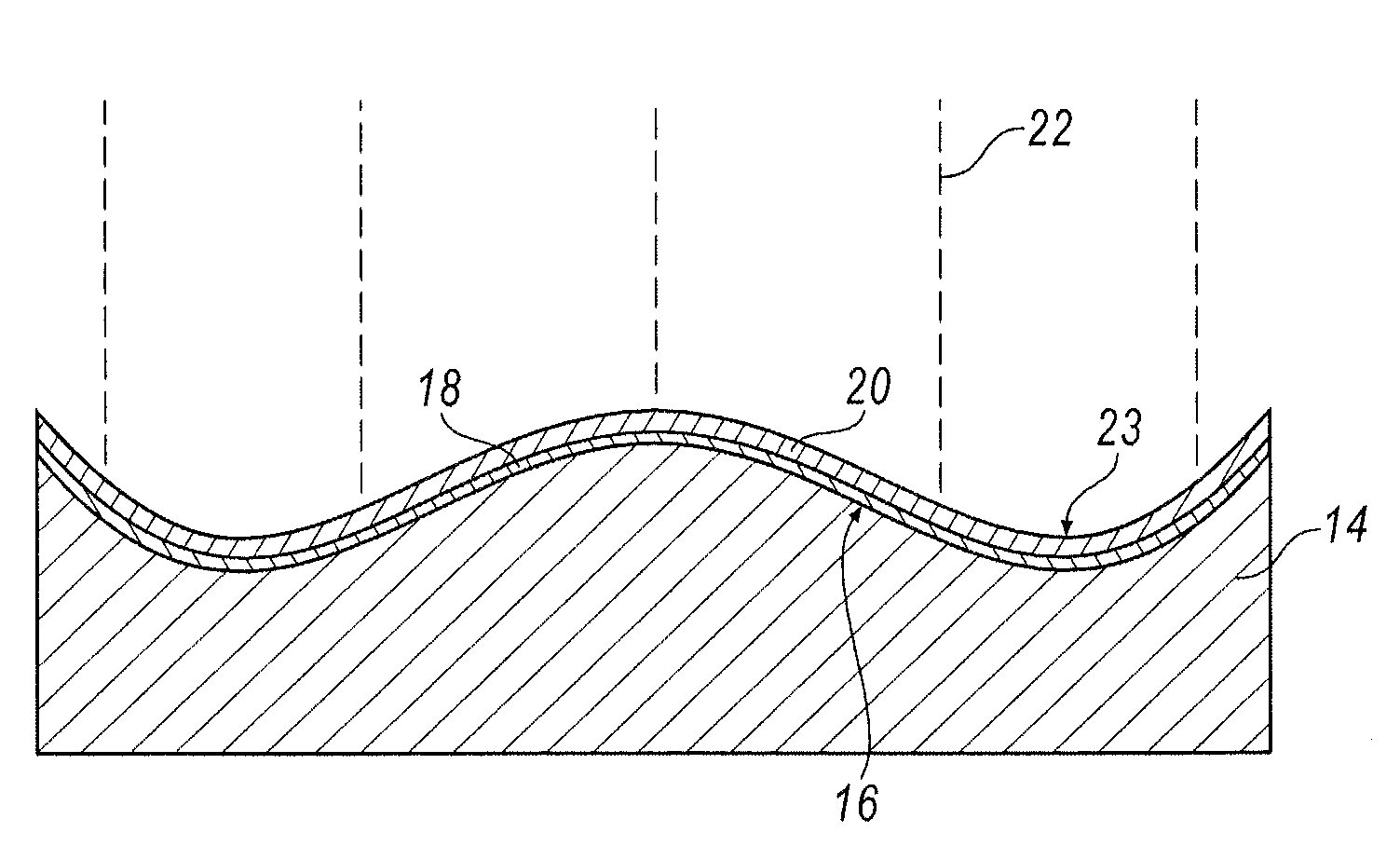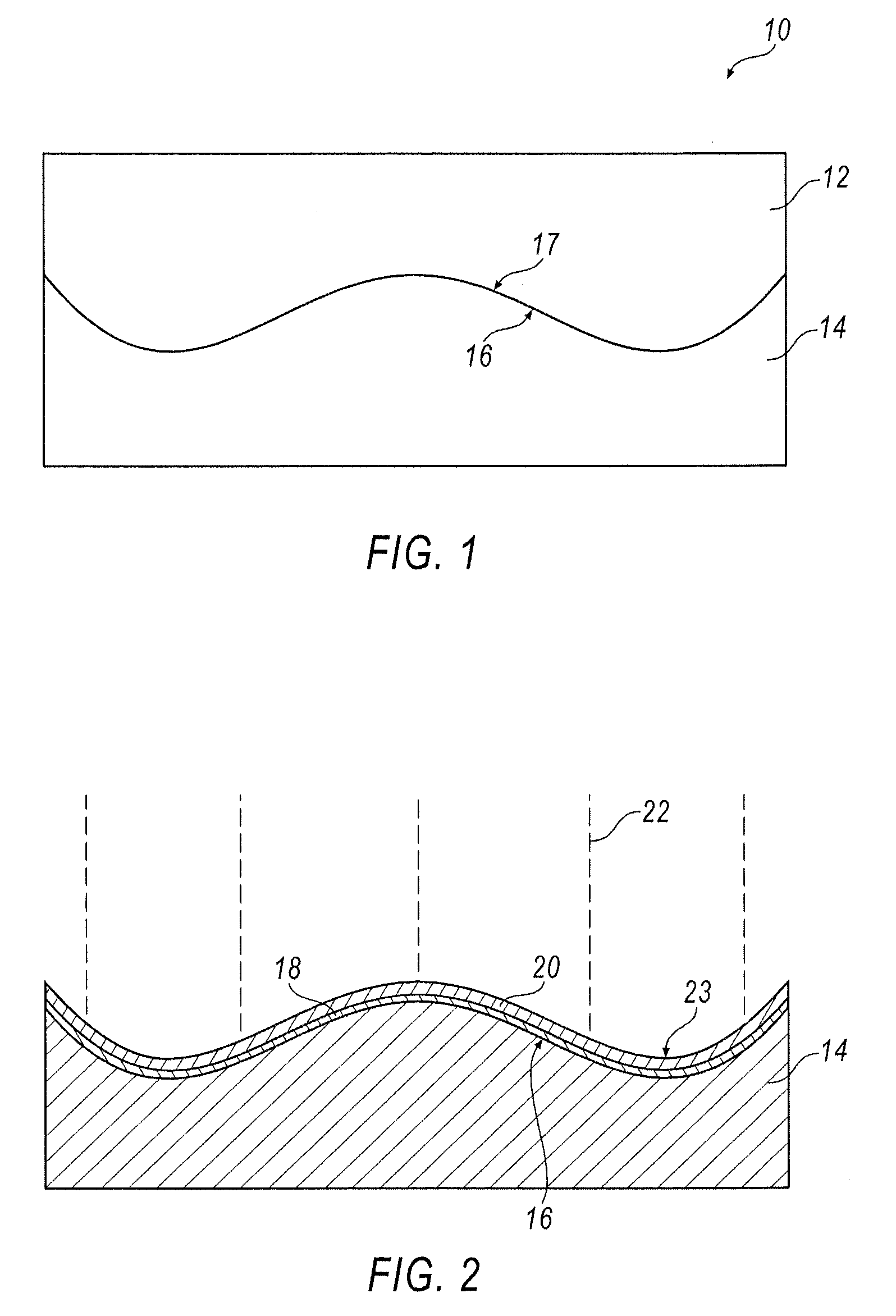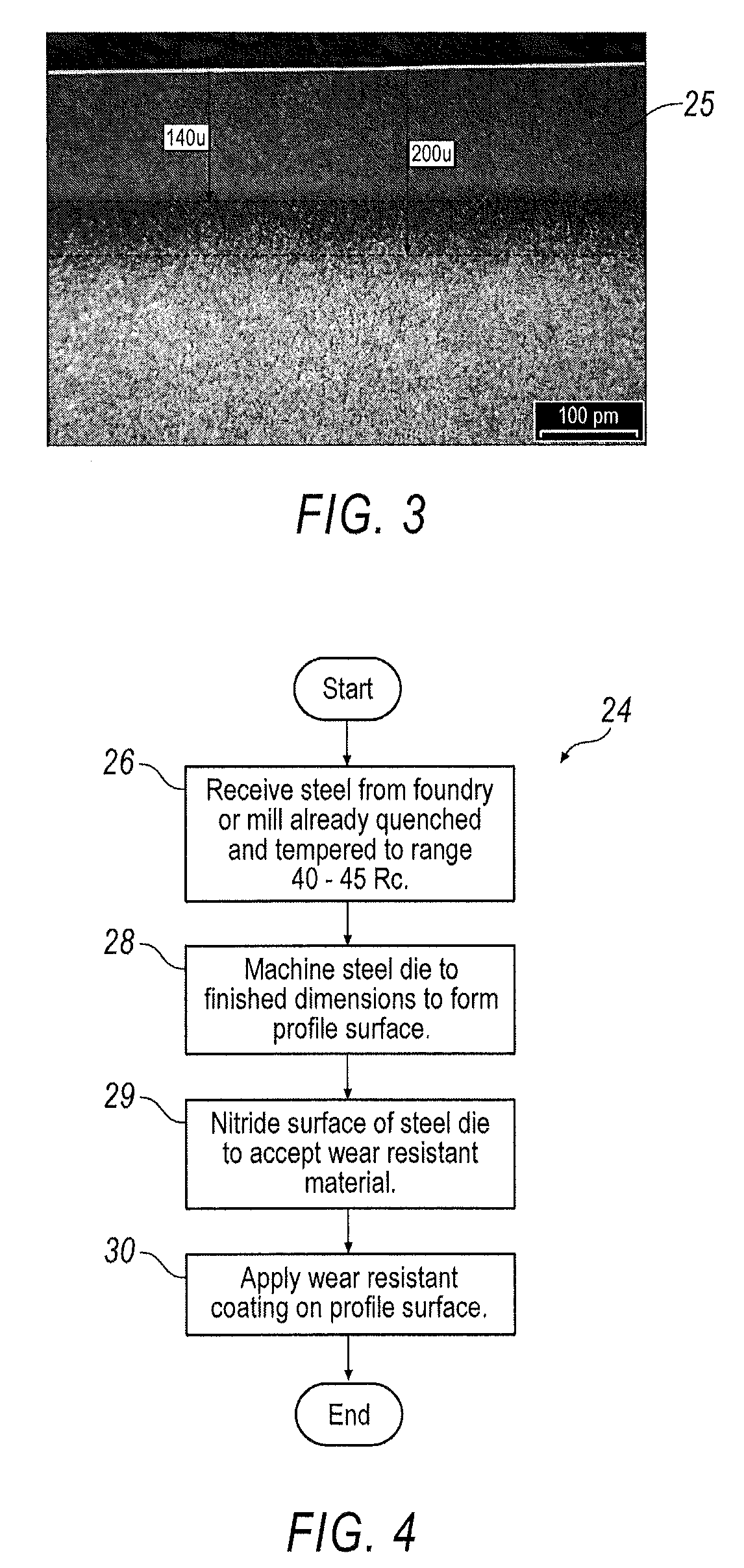Wear resistant coated sheet metal die and method to manufacture a wear resistant coated sheet metal forming die
a technology of coating sheet metal and forming die, which is applied in the direction of solid-state diffusion coating, cutting tools, drawing profiling tools, etc., can solve the problems of inability to finish the machining process in soft condition, slow machining and grinding after quench and temper, and high cos
- Summary
- Abstract
- Description
- Claims
- Application Information
AI Technical Summary
Benefits of technology
Problems solved by technology
Method used
Image
Examples
Embodiment Construction
[0016]Turning now to the drawings wherein like numbers refer to like structures, and preferably to FIG. 1, there is shown therein a steel die 10 having a top member 12, a bottom member 14, and preferably complimentary surface profiles 17 and 16, respectively. The steel die members are preferably quenched and tempered at a sufficient temperature to provide members having a Rockwell hardness in the range of about 40 to 45 Rc, and a compressive strength of about 1500 to 1750 MPa. The profiles are preferably cut into the steel members after they have been subjected to quenching and tempering, as steel in the hardness of 40-45 RC range may still be machined economically and easily.
[0017]Referring now to FIG. 2, there is showing therein a cutaway side view of die member 14, showing the coating 23, being deposited onto the profile surface 16. Specifically, coating 23 is a wear resistant material, or a series of wear resistant materials, that may be applied in a single coat, or in multiple ...
PUM
| Property | Measurement | Unit |
|---|---|---|
| compressive strength | aaaaa | aaaaa |
| thickness | aaaaa | aaaaa |
| thickness | aaaaa | aaaaa |
Abstract
Description
Claims
Application Information
 Login to View More
Login to View More - R&D
- Intellectual Property
- Life Sciences
- Materials
- Tech Scout
- Unparalleled Data Quality
- Higher Quality Content
- 60% Fewer Hallucinations
Browse by: Latest US Patents, China's latest patents, Technical Efficacy Thesaurus, Application Domain, Technology Topic, Popular Technical Reports.
© 2025 PatSnap. All rights reserved.Legal|Privacy policy|Modern Slavery Act Transparency Statement|Sitemap|About US| Contact US: help@patsnap.com



